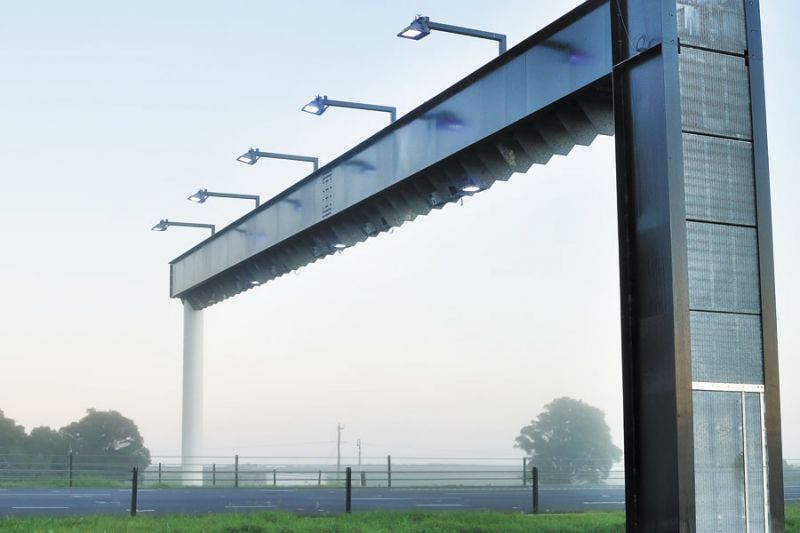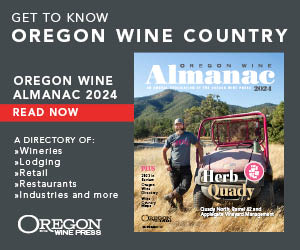John A. Charles: Tolling people on to Portland’s highways
Earlier this year the state legislature passed a bill requiring the Oregon Transportation Commission (OTC) to apply for federal authorization to implement “value pricing” on two regional highways: I-205, and I-5, from the Washington border to the intersection with I-205. The OTC must apply by December 31, 2018.
Although value pricing may sound vague or somewhat ominous, motorists should be happy with this new policy. It has the potential to eliminate traffic congestion and create a revenue stream that will allow us to build the new highways and bridges we need.
First, some background. “Value pricing” is a bureaucratic term for electronic tolling of highways where toll rates vary based on the density of traffic. Usually, the rates change depending on time of day, direction of travel and day of the week. The rates are set to ensure 45 mph driving conditions at all times of the day, hence the “value” offered to motorists.
There are many possible variations on this theme. In most cases, value pricing is used on new highway lanes, allowing drivers the option of remaining in the unpriced, general purpose lanes. That probably will not be feasible in the Portland region because there is no room for an entire new network of priced lanes on I-5.
In some ways, this is a blessing, because variable tolling will make our current lanes more productive. If priced properly, it’s possible that new lanes will not even be needed, saving us the expense of construction.
Value pricing is necessary because our current system cannot address congestion. Our highway network is an open access system, where each trip appears to be “free.” Of course, it’s not free—it’s being paid for by various back-door mechanisms such as motor fuel taxes, vehicle registration fees and random federal grants. But we believe it’s free, so during peak hours we see a “stampede” effect.
When too many people try to enter at the same time, per-lane throughput drops substantially. The carrying capacity for most highways is roughly 1,800 vehicles per-hour in each lane. At times of hypercongestion, this figure can drop to 900 vehicles or fewer.
By using variable pricing, we can clear the stampede and get per-lane travel back to 1,600 or 1,800 vehicles per hour. In essence, value pricing allows us to “toll on” more people than we “toll off.”
The effect was seen recently when tolls on the Port Mann Bridge in Canada were removed September 1. The Port Mann is a 10-lane bridge over the Fraser River near Vancouver. After tolls were removed, the result was a huge increase in congestion. One driver saw her daily commute increase by 25 minutes each way. She told a news reporter, “Absolutely, it’s terrible. It’s selfish but I want those tolls back on.”
In addition to the benefits of free-flow driving conditions, variable tolling will also create the dedicated revenue stream we need for future highway expansion. There is no doubt we need several new bridges over the Columbia River, plus additional highway lanes elsewhere. Value pricing will tell us where to build, when to build and who is willing to pay.
Fortunately, the Oregon Constitution does not allow toll revenues to be siphoned off for non-highway uses, such as light rail construction. Therefore, money paid by motorists will benefit them directly.
The new law mandates value pricing on two specific highways but also authorizes the OTC to implement pricing anywhere. Since the Portland highway network is an integrated system including I-84, I-5, I-405, Hwy 26, Hwy 217, and I-205, it would be better to implement value pricing region-wide to ensure motorists get what they want: free-flow driving conditions, at all times of the day.
Most new highways being built around the world are using electronic tolling with variable rates. The new Oregon law is an opportunity for us to learn from that experience and to introduce a Portland highway pricing system that truly delivers “value” for motorists.
This article originally appeared in the Wilsonville Spokesman.











Comments
Denise
The Wilsonville Spokesman?
So one of the most affluent cities in Oregon doesn’t want the riff raft poor folks clogging up their commute times? So let’s toll them so they can’t afford to gum up the roads?
Nice.
As a side question, one can assume fuel taxes will be decreased? Haha. Just kidding.
Larry3
They should add a toll on 99W from Tigard to Dundee and Hwy 18 from Mac to the coast.
Brad M
at Larry3. No way. I drive to work from mcminnville to Grande Ronde. That would suck.
Don Dix
Oregonians will pay a 4 cent/gal. increase in gas tax Jan. 2018, as well as a $15 fee on bikes valued over $200.
In addition to the gas tax increase and bike fee, revenue is set to be generated through these additional revenue streams:
•An $16 flat increase in vehicle registration fees plus an additional tiered-fee will be assessed based on vehicle mileage to ensure everyone pays for their share of the roads.
•Implements a 0.1% payroll tax to fund transit systems.
•Implements a 0.5% new car sales tax to be allocated to multimodal programs.
For more than 30 years, the legislature and the governor have been a do-nothing pack of money-seeking grubs. And these new proposals are anything but new (just another method of dollar extraction from residents). That's what happens when the welfare of Oregonians is not at the top of the priorities list!